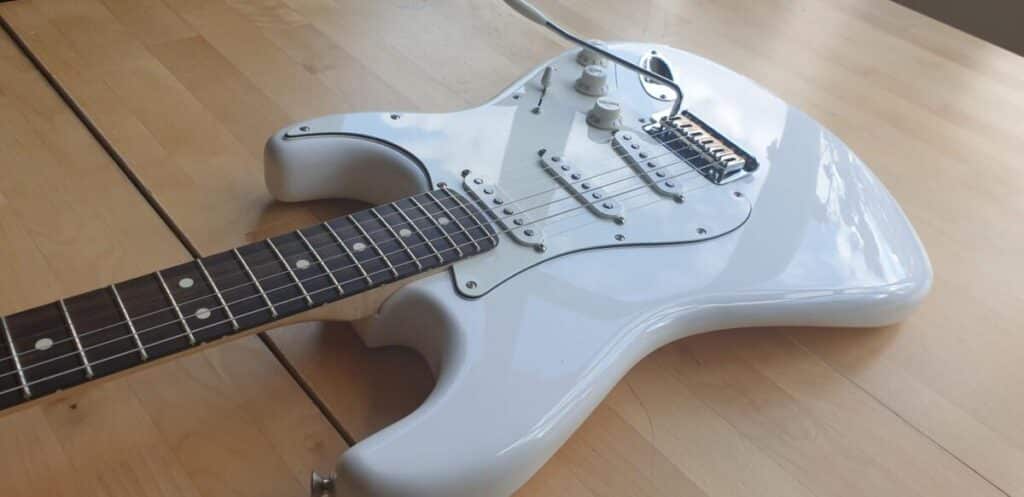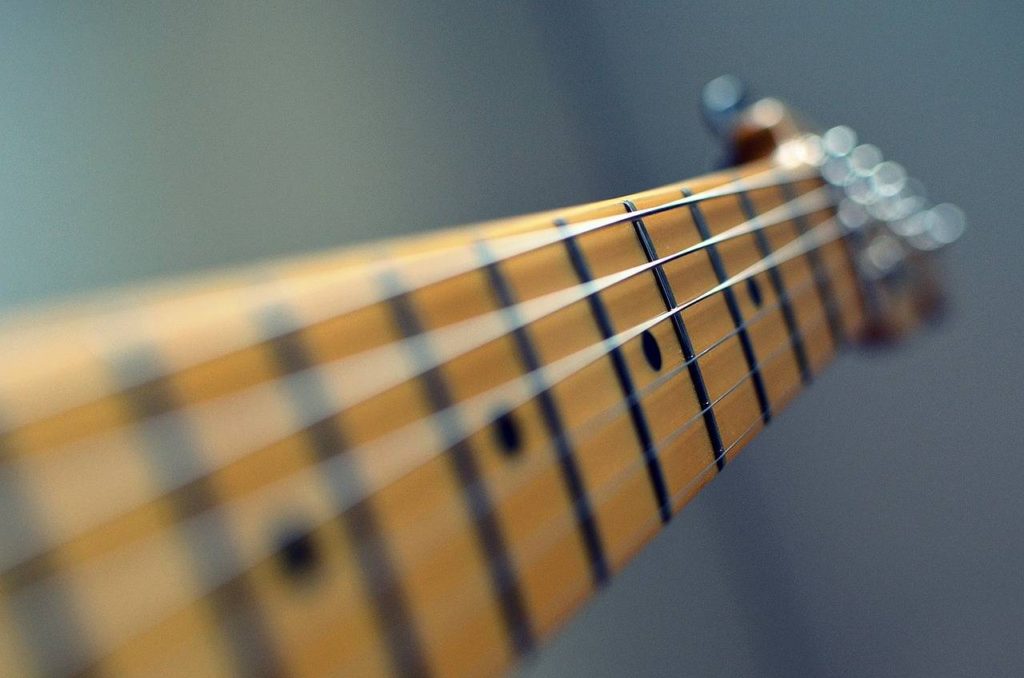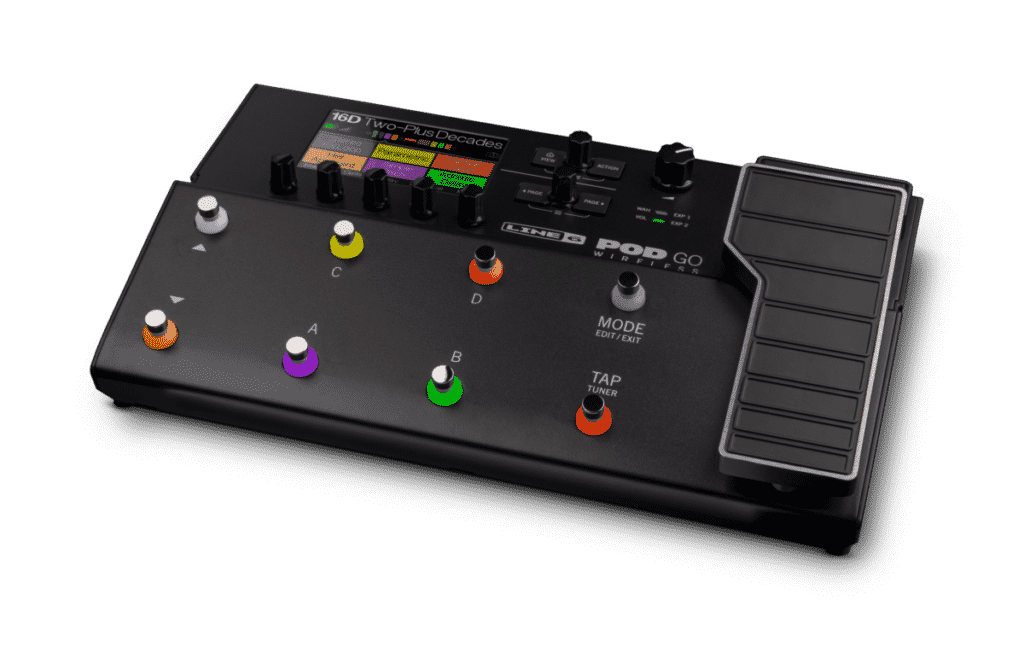To the casual onlooker, there doesn’t seem to be much difference, at least cosmetically, between two of the most popular electric guitars in the world: The Fender Player and Squier Affinity Stratocaster.
Having owned both of them for some time, I thought it would be useful to discuss in detail how they differ from one another.
Cost
An easy one to start off with. The Squier Affinity Stratocaster retails at £215 vs £669 for a Fender Player Stratocaster (3 single coil version). Those are the official retail prices from Fender.com. That’s right, the Mexican-made Player Series is THREE times the cost of the Indonesian Squier, so the most obvious question is: Why? Well, labour costs to some degree, but what about the stuff that actually impacts the owner?
Looks
The most obvious visual thing are the headstocks, with the Player Series being an absolute classic, going back to one of the most beautiful ever designed. The Squier goes for the big 70’s look, with the two string trees always looking over-fussy to me too. Other than that? Well, they’re both Strats and very similar.
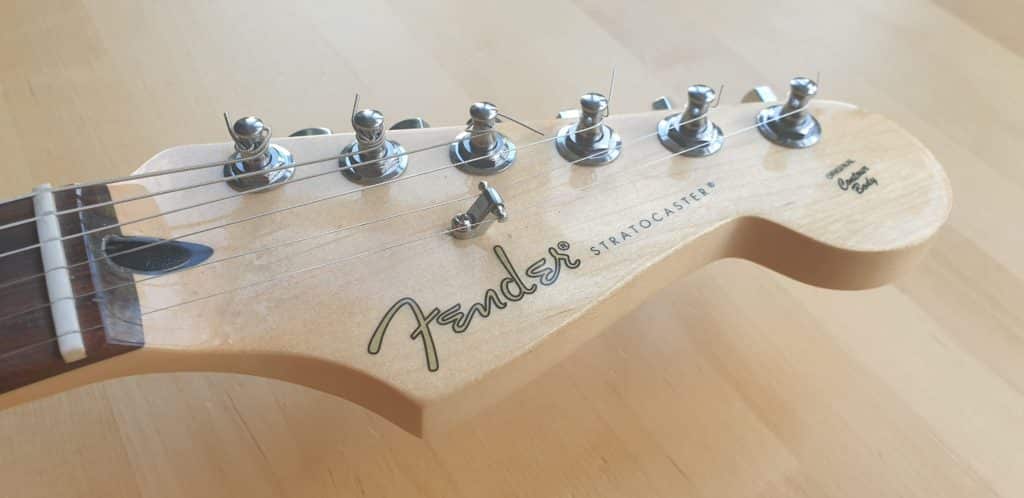
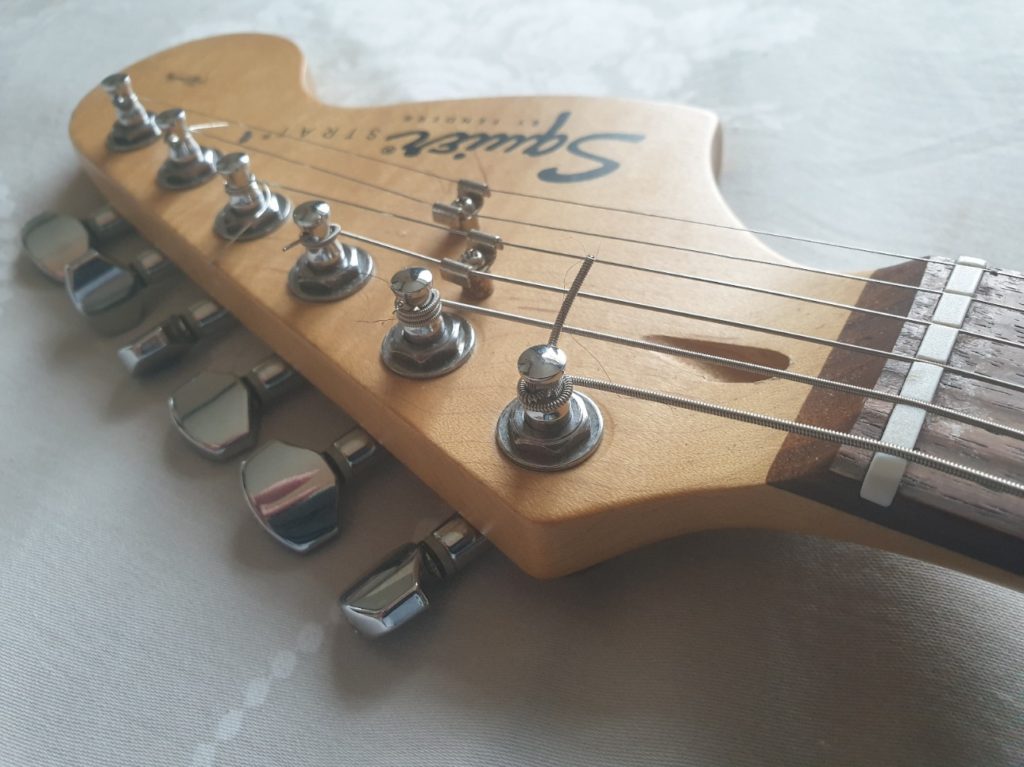
Build Quality
As you would expect for three times the price, the Player Series is the more solidly constructed, with much greater attention to detail. This is evident in places like the trem/control cavity where you can see how precisely the finish has been applied and electronics installed. Also, the neck join is solid and accurate, unlike the Squier which needed some attention in the form of a shim to sort the neck angle out.
In a nutshell, the Player series is more sturdy and feels a lot more together as an instrument, which fills you with more confidence than the Squier.
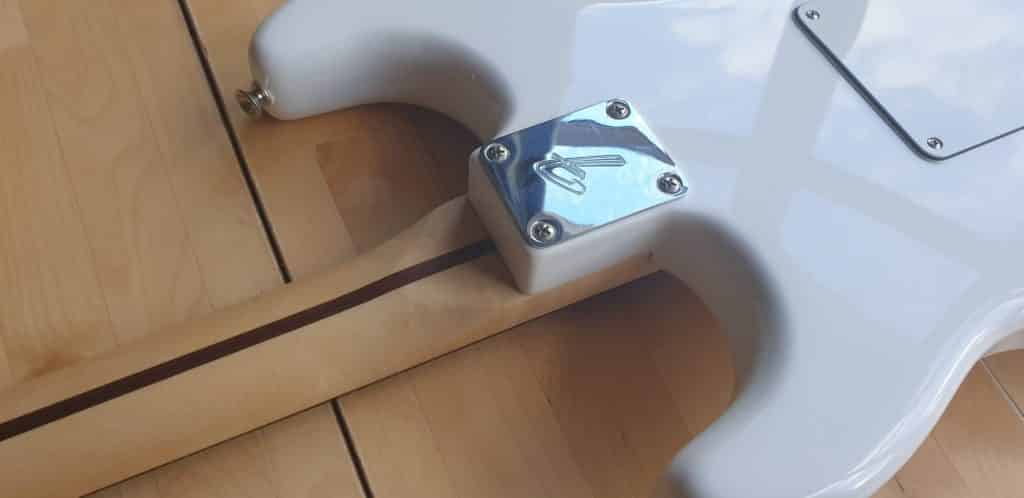
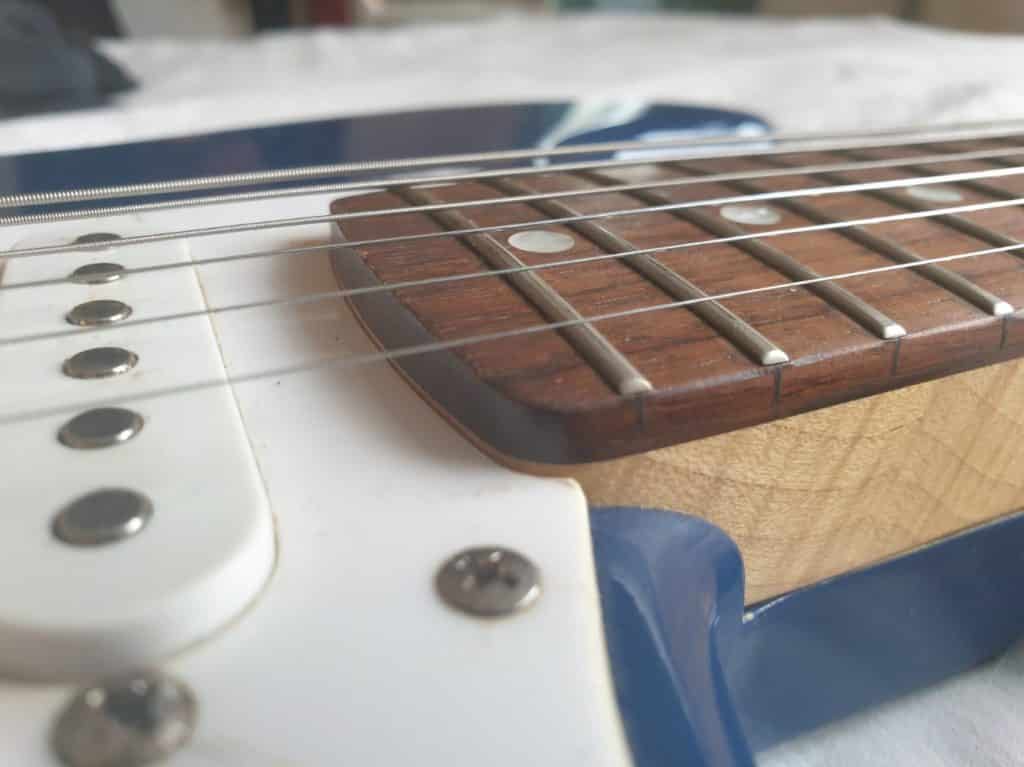
Hardware and woods.
It’s been mentioned many times that hardware-wise, the Fender Player Series is right up there with its USA Series big brother. Big-block 2-point trem, full-size pots with quality electrics, and decent spec machine heads. I can vouch for all the above, with the only concession to USA spec being the antiquated screw-in tremolo arm vs the nicer push-in variety.
The Squier Affinity series Strat falls way short of the mark here. The tuners barely function, the six-point trem isn’t fun to set up or live with, and is clunky in operation. The pots are smaller and cheaper, the electronics are noisier. In fairness to the £200 Squier, it feels cheap because it IS cheap. Yes, you could upgrade the tuners, the trem, and the electronics. but it would almost equate to the cost of the whole guitar!
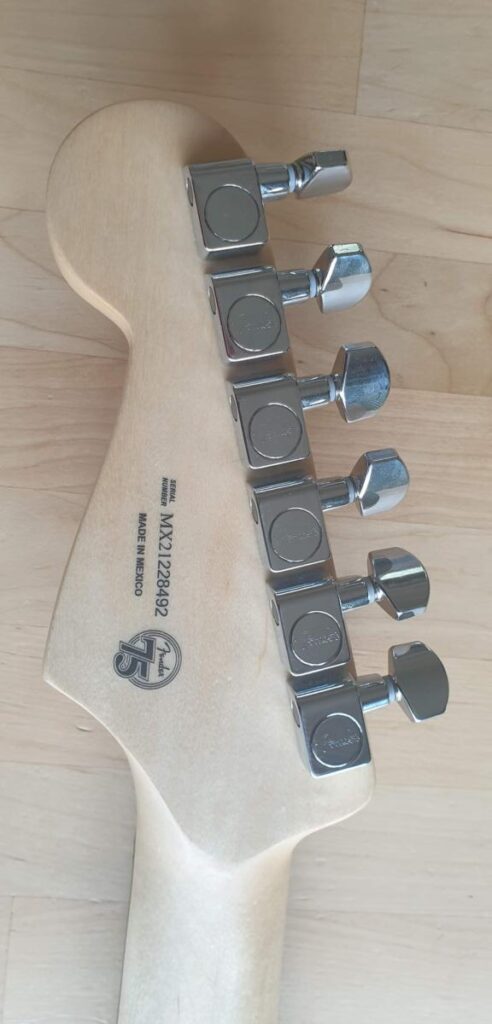
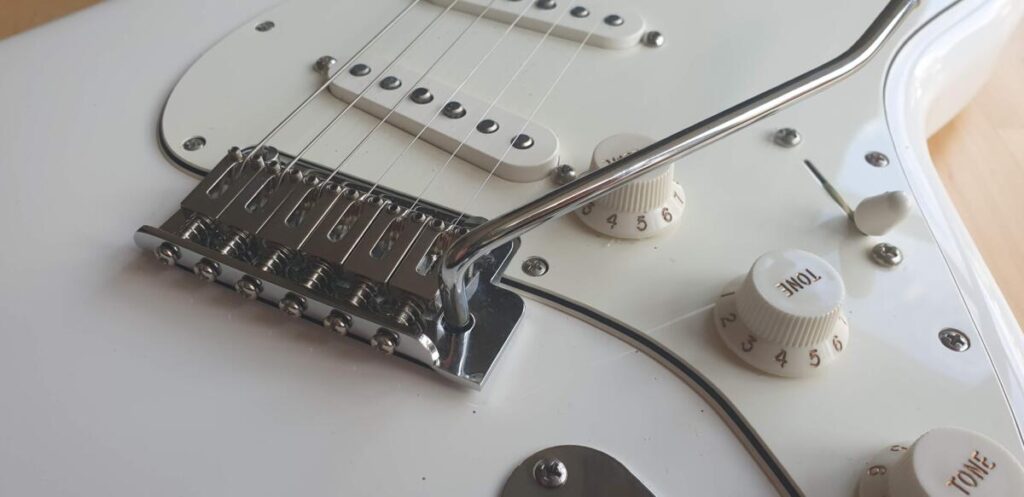
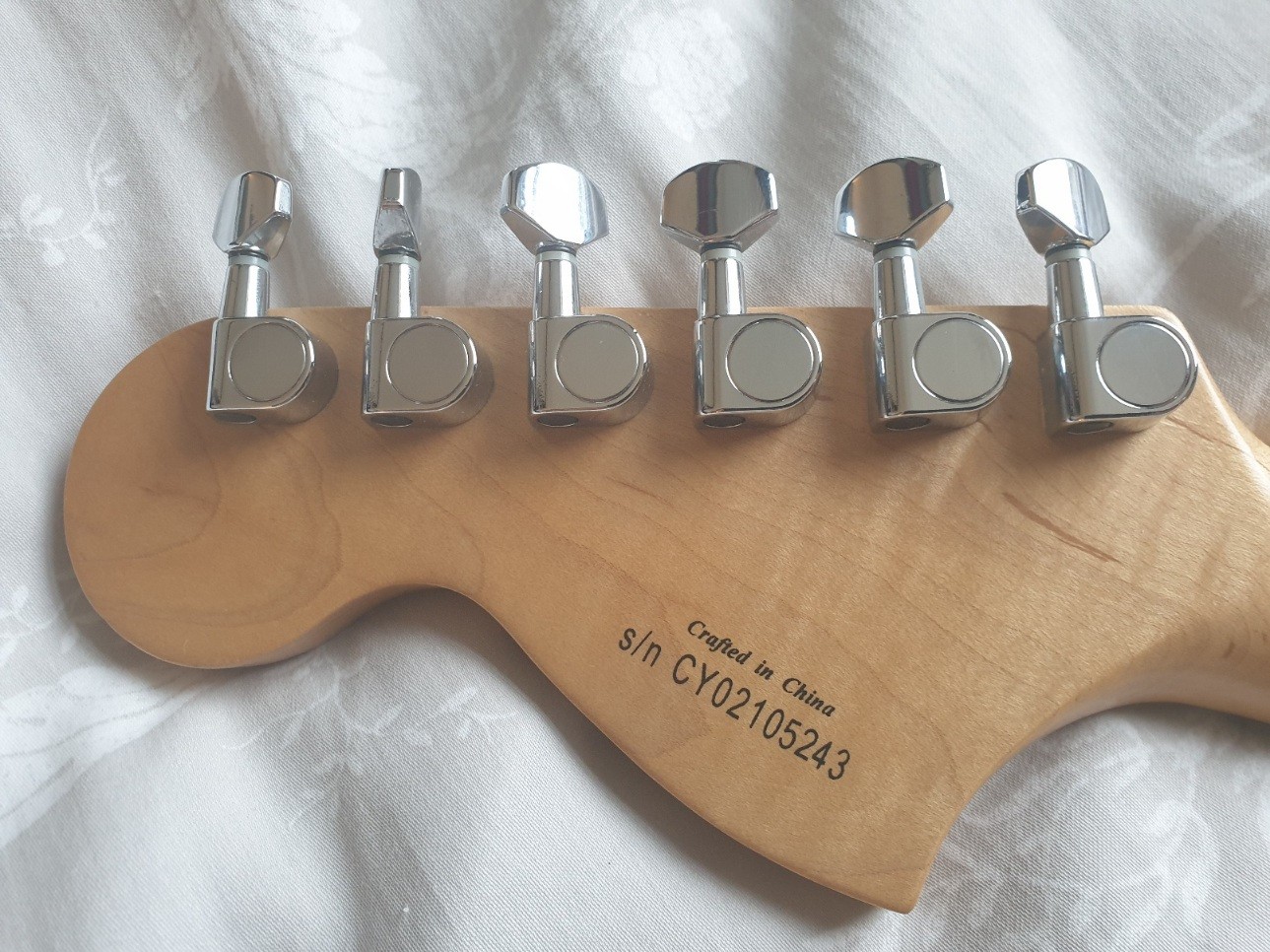
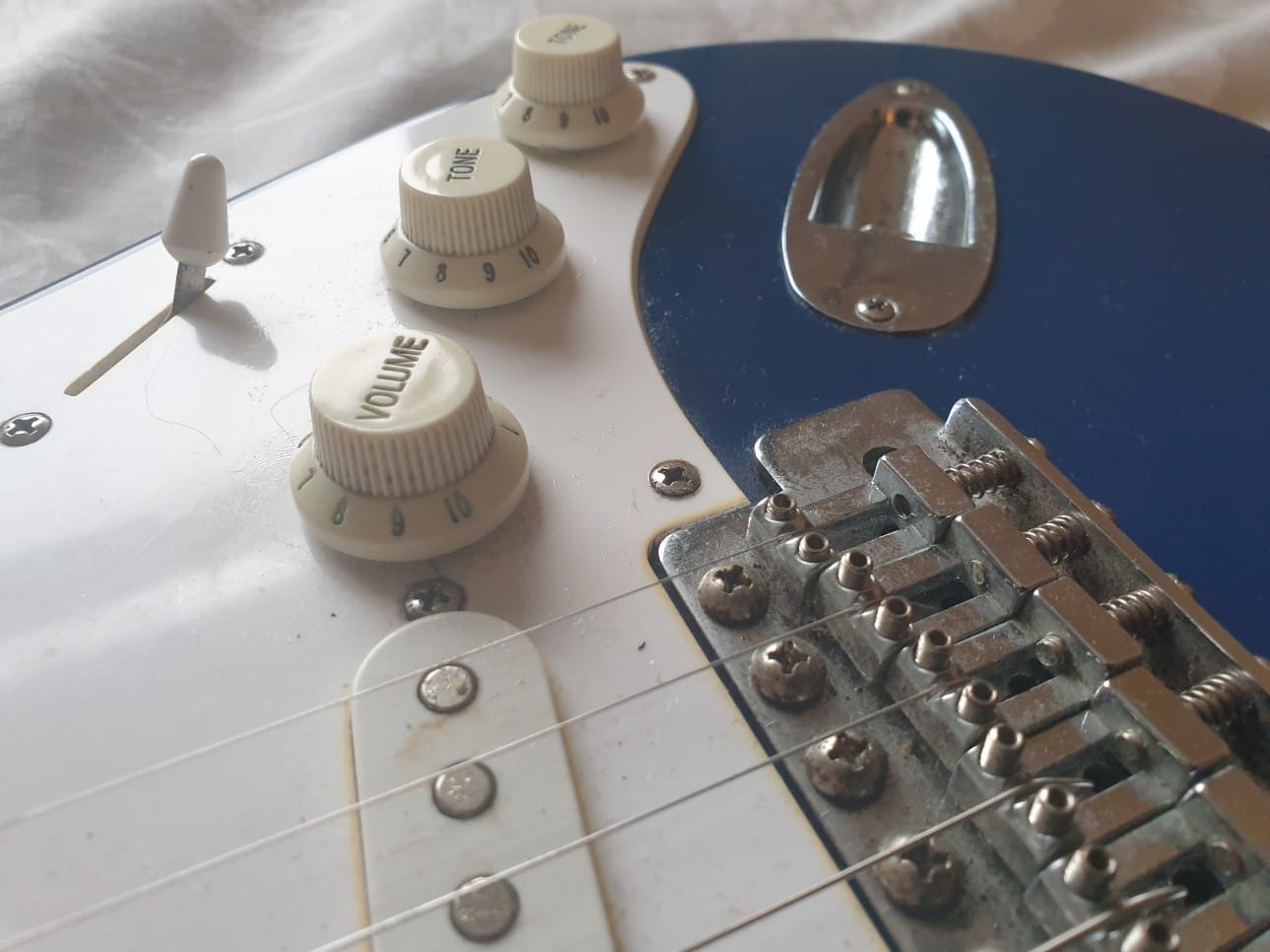
In the feel of the neck and again, and on closer inspection of the trem cavity, you can tell the Player series has been constructed with superior woods. My Squier (from the early 2000s) was notorious for being the guitar globally mocked by Yamaha as being constructed of plywood in their Pacifica sales pitch. To be honest, I’m not totally convinced, but the Squier definitely feels like quality wood wasn’t a priority. How can it be in a £200 guitar?
Tone
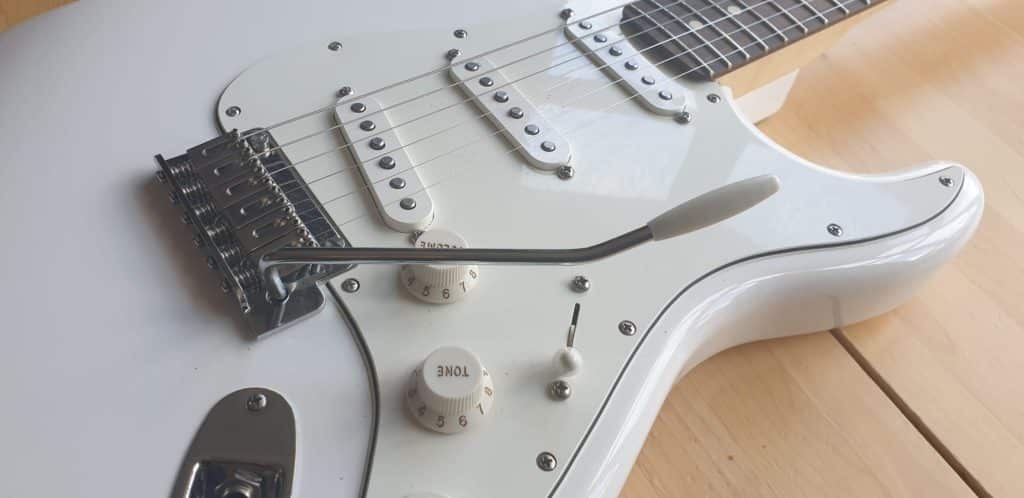
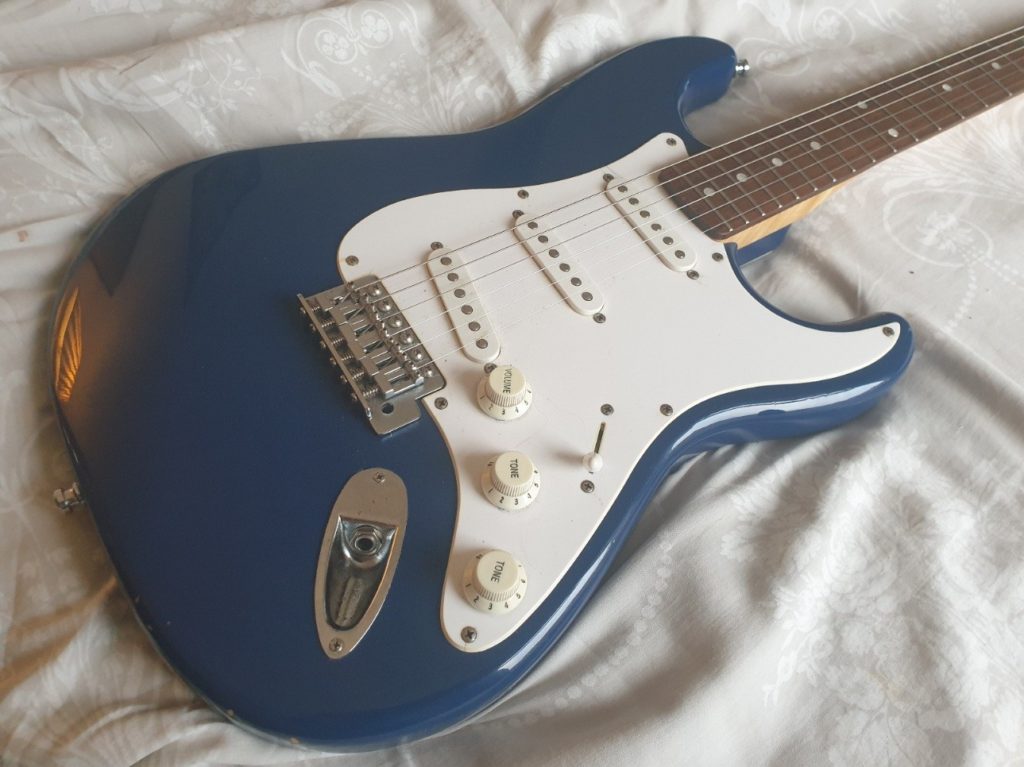
Well, this is what we’re all here for at the end of the day. The Squier Strat features ceramic pickups, but these aren’t the higher-output, fuller-sounding units of the earlier Mexican Standard series Strats, these are lower-output, generic, and cheaply build. Do they sound like a Stratocaster? Of course, they do, but there’s more noise, almost sounding scruffy in nature, and not a lot of subtlety. When overdriven, it’s more messy and unsatisfying. Get the full review here…
By contrast. The Player Series Stratocaster is loaded with three Alnico V pickups, which strike the perfect balance between the lower-output vintage-style alnico IIIs and something like a set of ceramics or Texas specials. It’s a modern, controlled, but still classic Strat voice, in all positions. Clean, it’s pristine, beautiful and bell-like, and overdriven this translates into all those silly contradicting terms that make no sense until you hear and feel it. I’m talking warmth and sustain with definition, clarity, and note separation. Get the full low-down here…
What can I tell you, the Player Series Stratocaster sounds better than the Squier Affinity Stratocaster, by a long way.
Playability
Same scale length (25.5 inches). Same neck radius (9.5 Inches), very similar weight, fret, and neck profiles. It’s very close. However, the Player series has the extra 22nd fret, slightly more room across the nut width, and the satin finish on the back of the neck. The tremolo system is light-years ahead and super-smooth in operation. More than anything, the Player Strat feels like a coherent, Player’s instrument. There’s a synergy between the parts and construction, whereas, with the Squier, it’s been constructed to a price and to a price alone.
I’ll admit we’re talking fractions here, small things that will go unnoticed by the beginner or casual player. After all, a Strat is a Strat, and it’s still the best playing guitar ever made, whatever the price point. All I’m saying is that the Player is just that little bit better. £400 better? That’s one only you can answer.
How they make you feel
Sorry to end on the usual mushy and intangible guitar voodoo. But there’s an important other difference between these two (brilliant) Stratocasters that can’t so easily be labeled. The thing is, the Squier is a STEAL at £200. It looks like, plays like, and sounds like a Stratocaster….. because it IS a Stratocaster. For many, that will be enough. I get it. It’s brought me a lot of pleasure, I’ve recorded with it, and I fell in love with it. But despite all that, if you concentrate hard, and look into the detail under the hood, you can see where the costs have been cut, and where concessions have been made to get down to that incredible price. Again, many won’t care about that.
But I’ll never forget the day I first held the Fender Player Stratocaster in my hands. Everything, and I mean EVERYTHING is just that little bit better, and all those little improvements add up to make, overall, quite a substantial although not obvious difference. It’s both sleeker, and slicker, but (I’m doing those contradictions again), more solidly built. It’s like you have the confidence to be more unruly with it, whereas with the Squier, I dunno, you have to play to its limitations. I feel like I could take the Player anyway and it would produce the goods with little care and fuss for years to come. Not so much the Squier, which feels like a sonic compromise with remedial work and replacement parts always around the corner.
Yes, the Squier is a Strat, but the Player Series inspires and delivers so much more.
Is the Squier Affinity Stratocaster worth upgrading?
Or in other words, Should you buy a Player Stratocaster or upgrade your Squier? That depends on if the foundations of your Squier are right. Does it play perfectly (for you)? If so, as I said earlier, you could probably upgrade to the same spec parts as a Player Strat for £200 with a little effort, meaning you’ve sunk £400 into the Squier. My view is, at this point, you haven’t really got anything other than a more expensive Squire with the same woods and construction. You still have 21 frets and the slightly cramped nut width.
After all that work, I don’t think you’d be at Player Series level after the parts upgrade anyway.
Also, in my experience, sourcing parts for Squier/Fender is a bit of a minefield, to say the least. The complication is the different part specs/measurements between different countries of manufacture that constantly change over the years. Fender obviously would prefer you to buy a whole guitar rather than a £2 part. Only recently I tried to source some height adjustment screws. Absolute nightmare.
I’ll leave it with you.
Buying a Fender Player Stratocaster?
You can support the blog by ordering through my Guitar Centre affiliate link here.
Buying a Squier Stratocaster?
You can support the blog by ordering through my Guitar Centre affiliate link here.
If you found this article useful or would like to give your take on it, drop me a comment below.
